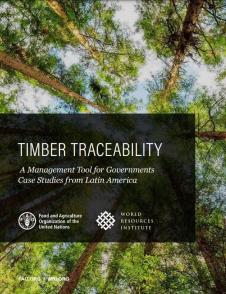Timber Traceability: A Management Tool for Governments — Case Studies from Latin America
During the last decade, a wide array of timber traceability systems has been developed in timber-producing countries. As the trend towards traceability continues, it is important to document lessons and best practices as a reference for government officials in other countries who are interested in pursuing this path in the future.
This growing interest reflects, in part, an increase in demand for products of legal origin from international markets. Buyers are required to comply with regulations such as the Lacey Act of the United States of America or the European Union Timber Regulation by assessing and managing the risk of sourcing illegal timber in their supply chains. As such, governments in timber-exporting countries have become increasingly interested in exercising more control over timber supply chains and helping private-sector actors in their countries access these now regulated markets.
When fully implemented, these traceability systems should be able to trace individual logs, or batches of timber, from a legal place of harvest through the supply chain to domestic or international retail. While traceability systems bring additional requirements, private-sector actors can leverage traceability systems to enhance their competitiveness by optimizing management operations and enhancing quality control. Businesses can also use traceability systems to comply and demonstrate compliance with legality requirements, reducing their risk of legal exposure.
Knowing the origin of the products and details about the supply chain allows traceability system users to assess the legal, social and environmental claims associated with the product. However, traceability systems by themselves do not guarantee the legality of the products. A product can be traceable but not necessarily legal.
Developing and rolling out timber traceability systems can be challenging. Timber supply chains are complex, and traceability systems often involve changes in approaches, operations management and logistics that require significant financial and labour investments. System implementers often face resistance from the sector and capacity gaps.
The objective of this report is to document lessons and best practices in the planning of government-led timber traceability systems from seven countries in Latin America, to provide a reference for government officials in other countries who are tasked with developing and implementing these systems.
